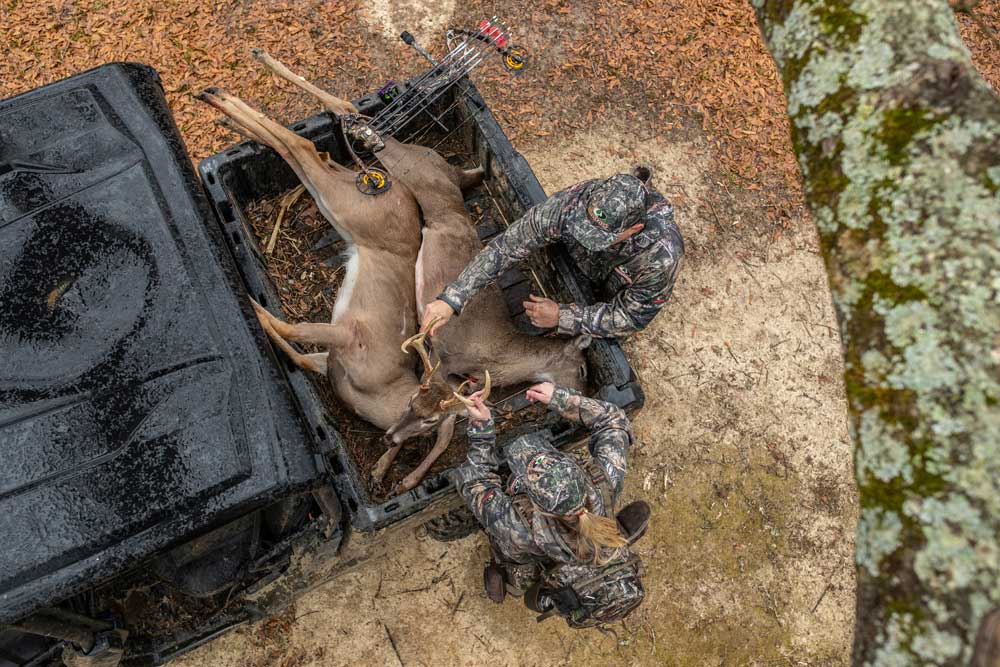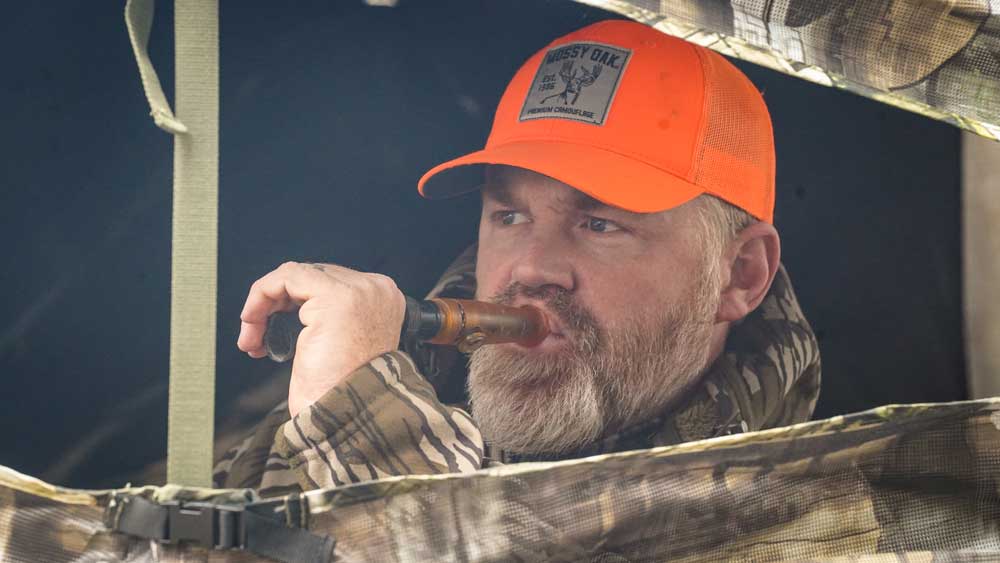Brodie Swisher

While hunters across much of the country are winding down their rut tactics and shifting gears towards late-season strategies, hunters in the South are just getting started. December ushers in some of the hottest deer action of the season as the rut kicks into high gear in the Deep South. And one tool every deer hunter should have in their pack during the rut is a grunt call.
Do grunt calls work every time you blow it? Of course not. But they work enough of the time that it’s a no-brainer to keep this tool in your pack as standard equipment for deer season. Below, we’ll shine some light on what the various grunt sounds mean, as well as mistakes deer hunters often make with a grunt call.
Different Types of Deer Grunt Sounds
It’s important to note that deer make a variety of grunt sounds, with each one expressing a different attitude or emotion within the herd. Also, both bucks and does make the grunting sound throughout the year. And while bucks grunt all year long, these grunts greatly intensify during the rut. Doe grunts are a soft and subtle sound that typically comes when she’s communicating with her fawns, calling them to cover, or to nurse.
Buck grunts include the social grunt, trailing grunt, tending grunt, and the growl or roar.

Social Grunt
As the name implies, the social grunt is a vocalization used as bucks maintain contact and communication with others in the herd. These simple grunts are made throughout the year as the basic conversation among members of the herd. It’s a soft and simple urrpp sound.
Trailing Grunt
The trailing grunt sound is one you’ll likely hear the most in the days leading up to the rut as young bucks, and old bucks, too, make the rounds looking for a potential doe to be bred. Whether he’s right behind her or following her scent trail, he’s in pursuit of a hot doe, and he’ll often be making this urrp-urrp-urrp sound with each step as he moves through the timber.
Tending Grunt
Once a buck has locked in on an estrus doe, he’ll stay with her the next several days to breed her throughout her cycle. Throughout this time, he’ll vocalize the tending grunt sound. It’s a low and slow, drawn out grunt. It typically conveys the buck’s frustration with a doe, or dominance toward other bucks. The urrrrrrrrp-urrrrrrrp sound starts low and gradually builds and then tapers back off. Bucks use this vocalization most often when they have an estrus doe pinned down somewhere. It is a sign of frustration, dominance and more. It is a very low, guttural sound and is drawn out when emitted. It starts out low, gets higher, and tapers off at the end of the call.
Buck Growl/Roar
The buck growl/roar sound has become popular over the last couple decades as more and more hunters have discovered this super aggressive sound bucks make when they are maxed out with frustration with a doe or other buck. It’s an aggressive grunt that rolls into a surprisingly loud growl or roar sound. You’ll typically hear this sound when a buck with a doe has other bucks trying to slip in and steal his lady. The urrrrr-ahhhh sound is the buck’s aggressive effort to say, “Back off!”

Top Grunt Calling Mistakes Hunters Make
- Not Putting Attitude and Emotion in the Call – Don’t just blow the grunt call like a half-broke party kazoo. Put emotion into the call! Remember, you’re painting a picture in that buck’s mind when you blow the call. Make sure you add all the emotion and attitude into your calling routine when trying to mimic the various grunts mentioned above.
- Calling When He’s Close – God gave the deer some incredibly keen senses. He’ll easily pick you out if you call when he’s already in tight to your stand. Keep him guessing, but don’t go overboard with excessive calling when he’s already close enough.
- Calling Too Soft – Yes, the grunt call is often a very soft sound. However, when you’re attempting to call a buck from a considerable distance, you’ll need the extra volume. A buck cruising through the woods will not likely hear the sound of your call until he’s stopped and listening.
- Calling When He’s Coming – If he’s already headed your way, let him come. There’s no need to keep calling. He’s doing exactly what you want him to do. The added movement or sounds of continued calling can likely give away your location and put the buck on alert. If he stops, or veers off course, hit him with another call. Otherwise, let him keep marching to your stand.
- Not Having Your Call Handy – Don’t be caught with your grunt call buried in your pack. Most often, when you need your grunt call, you need it right now. Keep it within easy reach so you have it when you need it most.
Don’t leave home without your grunt call this hunting season. Whether in the rut, or late season, a grunt call may be just the ticket to bring your buck within range for the shot. A grunt call is easily the best $20 you’ll ever spend. Give it a try this season, and you’ll find the grunt call to be worth its weight in gold for notching more buck tags every season.































